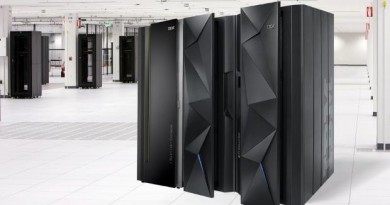Risk, relentless data center demand, open source and other tech trends from Gartner
It’s not a surprise to most in IT that the info/tech world is fraught with risk, change, and disruption but most of the time all of those issues aren’t laid out in front of them in nice, neat fashion like they are at Gartner Symposium/ITxpo.
By 2020 50% of large enterprises will have a digital risk officer devoted to threat management and things like IoT risk.
Nonstop demand: Relentless is the word Gartner used to describe the demand for data center resources. The key here isn’t so much about adding density and servers but how to most efficiently use these resources. Resource management is growing concern and there is a 35% annual growth rate in network bandwidth requirement to keep up. Today 39 million terabytes of storage is used globally and by 2019 that total will hit 89 million terabytes.
Open source hardware: Build your own hardware platforms. Take a look at Google and others who have done this. Open source hardware is roughly in the same place open source software was in the mid-1990s. What made open source software acceptable for many businesses was the arrival of support for it, such as Red Hat; something similar may take place with the hardware.
Enterprise workload monitoring is an emerging market but the idea is to be able to monitor what’s going on in these widely dispersed networks and resources. How do you manage performance and which business process is mapped to which applications. You’ll need to figure out what’s going on in your widely dispersed networks.
Concept of “enterprise-defined data center.” The new data center is everywhere – SAAS, PAAS, branch offices – it’s how you tie all of that together to deliver services the best way possible. Also involves giving IT the best tools possible to fix problems and manage the whole thing as if it were one.
The trend known to Gartner as “device mesh” refers to an expanding set of endpoints people use to access applications and information or interact with people, social communities, governments and businesses. The device mesh includes mobile devices, wearable, consumer and home electronic devices, automotive devices and environmental devices — such as sensors in the Internet of Things (IoT). As the device mesh evolves, we expect connection models to expand and greater cooperative interaction between devices to emerge, Gartner stated.
Advances in 3D printing have already enabled 3D printing to use a wide range of materials, including advanced nickel alloys, carbon fiber, glass, conductive ink, electronics, pharmaceuticals and biological materials. These innovations are driving user demand, as the practical applications for 3D printers expand to more sectors, including aerospace, medical, automotive, energy and the military. The growing range of 3D-printable materials will drive a compound annual growth rate of 64.1 percent for enterprise 3D-printer shipments through 2019. These advances will necessitate a rethinking of assembly line and supply chain processes to exploit 3D printing.
Everything in the digital mesh produces, uses and transmits information. This information goes beyond textual, audio and video information to include sensory and contextual information. Information of everything addresses this influx with strategies and technologies to link data from all these different data sources. Information has always existed everywhere but has often been isolated, incomplete, unavailable or unintelligible. Advances in semantic tools such as graph databases as well as other emerging data classification and information analysis techniques will bring meaning to the often chaotic deluge of information.
The rise of advanced machine learning involves deep neural nets (DNNs) that move beyond classic computing and information management to create systems that can autonomously learn to perceive the world, on their own. The explosion of data sources and complexity of information makes manual classification and analysis infeasible and uneconomic. DNNs automate these tasks and make it possible to address key challenges related to the information of everything trend. DNNs enable hardware- or software-based machines to learn for themselves all the features in their environment. This area is evolving quickly, and organizations must assess how they can apply these technologies to gain competitive advantage.
Gartner and the Future
Machine learning gives rise to a spectrum of smart machine implementations — including robots, autonomous vehicles, virtual personal assistants (VPAs) and smart advisors — that act in an autonomous (or at least semiautonomous) manner. While advances in physical smart machines such as robots get a great deal of attention, the software-based smart machines have a more near-term and broader impact. VPAs such as Google Now, Microsoft’s Cortana and Apple’s Siri are becoming smarter and are precursors to autonomous agents. The emerging notion of assistance feeds into the ambient user experience in which an autonomous agent becomes the main user interface. Instead of interacting with menus, forms and buttons on a smartphone, the user speaks to an app, which is really an intelligent agent, Gartner says.
Monolithic, linear application designs are giving way to a more loosely coupled integrative approach: the apps and services architecture. Enabled by software-defined application services, this new approach enables Web-scale performance, flexibility and agility. Microservice architecture is an emerging pattern for building distributed applications that support agile delivery and scalable deployment, both on-premises and in the cloud. Containers are emerging as a critical technology for enabling agile development and microservice architectures. Application teams must create new modern architectures to deliver agile, flexible and dynamic cloud-based applications with agile, flexible and dynamic user experiences that span the digital mesh.
Source: http://www.networkworld.com/article/2990138/security/gartner-risk-relentless-data-center-demand-open-source-and-other-tech-trends-it-needs-to-know.html



